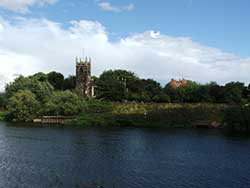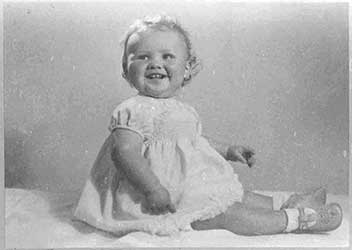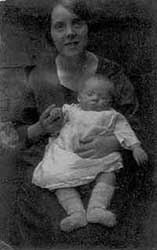The Memory of Bridges
This memoir is my account of the reclamation of my history, a return to the village landscape of my childhood and the family I have lost. And it is a fiction writer’s search for the truths of a real life that has been suppressed for years.
Introduction
In 2006, I have a recurring dream of crossing a bridge at night. I am trying to get home to the village where I grew up in the 50s and 60s, the place I left after my mother’s death in 1983. In the dream my mother is reading a book: the history of Wilford Village that she was writing when she died. The book that was missing, when I came to sort through her effects.
I too am a writer. I have been a writer of historical fiction, a writer happiest in fictional worlds. The story I have never been able to tell is my own, and it is the story I must tell if I am to reclaim my life. At the start of the memoir, I visit Wilford as an adult, looking for relics of my past. There are houses I have lived in, fields where I played. Most of all there are bridges: some still standing, some disappeared. These bridges are my routes into the story of my past. I have to cross to the side of the river where I once lived, to find my buried memories and tell my story.
From The Memory of Bridges: Chapter 1, The Power House

If you look at a map of Nottingham you will see, on the south side of the city, a tongue of land formed by a meander in the River Trent, a pale blue meander thrown around the land like the loop of a skipping rope. A tongue of land pushing like a cheeky boy towards the city but safe from it, safe behind its water barrier. This tongue, or isthmus, is Wilford, a once-medieval village built in linear fashion along its main road, branching out here and there into 1920s and 30s cul-de-sacs of neat brick semis, but keeping generally on a south to north course, hugging the west bank of the river as it heads for the tip of the tongue and the old Toll Bridge, the Victorian structure of brick and iron which bolts it to the world on the north side of the Trent. To the east of the village, and bisecting the isthmus into west and eastern halves, is the almost dead-straight line of the railway embankment, carrying the goods and passengers of the Great Central Railway south to London, crossing the river by its own double bridge of massive metal piers and girder spans and dwarfing the Toll Bridge a hundred yards away. East again, and everything is green to the far shore of the isthmus: a green of fields and allotments and scrubland scrawled with the wavy lines of unofficial paths: paths to the willows along the river, paths to dens, paths to the arches of the railway viaduct, paths to the glassy water of the Ballast Hole, a lozenge of water left by a forgotten flood and stranded, like an Oxbow lake, in one of Wilford’s fields. And around the fields, floodbanks, of the earthen, informal variety, that are a part of our landscape, surrounding us like Dutch dykes, good vantage-points and boundary markers. On the river side of the floodbanks nearest the bridge are fields of ponies; to the east of the isthmus, beyond the railway line, is the wilderness of paths and dens and undergrowth we call the Willowwoods. Here, where the land is vulnerable to inundation and thus unusable, we run wild, but not too wild; still within the river’s arm, still close to home.
Water. Without which Wilford would have been absorbed into the city long ago, without which it would have lost its village identity, its legends of fatalities on the ferry which served as conduit across the river until the bridge was built; its legends of drowned limp bodies lying in the riverside mortuary next to St Wilfrid’s Church. Without which it would hold less holiday magnetism for the slum-dwellers of the Meadows, enjoying the otherness of the bridge crossing, the paying of the toll, the teas served from thatched cottages and cherry-eatings in the Vicarage garden,. Water, without which the village’s residents would not have had to move upstairs after the winters of 1940 and 47, while the Trent forsook its loop and moved in on the village, levelling everything to a depth of feet, or yards, depending who you asked, and causing engineers to raise the floodbanks higher, felling the avenue of elms along the old Bee Bank and hoisting up its horizon with earth and stone and new techniques in concrete.
Water that divided us from the industry on the north side of the river, from the spinwheel of Clifton Colliery, the Power Station with its Art Deco brickwork, its tall chimneys with their pink evening glow, the long aeroplane hiss of sudden escapes of steam; that protected us from the dull controlled explosions and unexplained lightning flashes emanating from the Gun Factory. These places were of Wilford, but North Wilford, caught in the photographs of early village views as blurry backdrops, hard shapes softened out by lenses fixing on the small, the near, the picturesque, the rural. Existing in a kind of willed myopia, an uncorrected vision defect that we all had.
Lenses that we need just to go about our daily business, in the 1950s, the 1960s. So many of us are short-sighted: my grandmother, my grandfather and my mother with their bottle glasses, the sepia-brown tint to protect their eyes from sun. Turn up any photograph of the Women’s Institute or the Mothers’ Union and there they are, beneath the candyfloss topping of best hats; the spectacles, some black severe National Health issue, most of them winged on the top edge of the frame, blue plastic flourishes turned upward at the end like surrogate eyebrows. Without them we do not see very far, maybe to the end of the avenue, maybe as far as Mr Pearce’s flame of white hair as he reads the lesson; certainly not the numbers of the hymns or the sums on the blackboard, not as far as anything that changes, that cannot be remembered. Without them we can still walk through the village in soft focus, getting our bearings from the white front of Hunter’s Farm as we pass it, the green pools of the village greens, the squat Georgian huddle of the Village Shop, where the week’s grocery order is waiting for us in a basket. Short sight keeps us content, thankful in a postwar world where there is so much to be thankful for. The two world war generations make do and mend, they cut their loaves of bread horizontally so that the slices are holed with the tracery of lace, they save brown paper and butter wrappers and light the stove with long coloured tapers. Their carbon footprints, supposing such a thing were known of in the fifties, would be light as air. Most of the villagers, including my own family, own no car; my family will never own one. And the Toll Bridge, its curlicues of ironwork corroding into rust-flowers beneath our feet, is already too weakened to support a bus; its weight limit falls year by year, four tons, two tons, Pedestrians Only. We are untroubled. We walk, as we have always done.
And for everyday needs, Wilford provides: the sweetshop with its penny box full of liquorice and glass jars of Pineapple chunks and Dolly mixtures (3d for two ounces), the Village Hall where there are dances and Church socials, the pub where the beer is brought by two splendid dray-horses that leave their steaming droppings in the road, shining brown like soft horse-chestnuts; the church breasting the bend in the river like a lighthouse, for those occasions where change feels like continuity: birth, marriage, death.
It is 1922, three years before the power station comes on line, and my family do not yet belong to Wilford. But they will, they qualify already by reason of their wish to belong; and curiously, also already, by reason of short sight. Both of them have it, two of the smartest people in the long queue waiting to come over the Toll Bridge on Bank Holiday Monday.
My grandparents, not long married, are waiting in the queue at the toll house to come over into Wilford, to walk around the village and take tea on the big field. Since their marriage they have lived on the north side of the river, next to the soot and smoke of the great goods yard at Queen’s Walk, but their Sunday clothes are clean and well-ironed. Lillian, my grandmother, is petite, with bright skin and dark bobbed hair; she has a weakness for hats, and her brown felt cloche is trimmed with a turquoise ribbon. Beside her my grandfather transfers his Player’s Navy Cut to his mouth as he pays over the two halfpennies at the toll booth. Ted has a fierce look to him, with bristly eyebrows that slope down to his nose, and flare out at his temples; with the bottle-thick glasses that shrink his eyes to dark slits, that will one day be brown-tinted to protect what is left of his eyesight from the sun; a fierce look that is undeserved, a genetic legacy from the hard farming life of his Cotswold forebears, carried with dignity like the smoker’s gravel in his voice.
My grandmother tucks her hand in the cool crook of his gabardined arm, and they make their way across the bridge. The river heaves grey coils of water around the cylinders driven into its bed, it curls and straightens with the current, fends off the city, lets the visitors gently down onto the slope of road running down into the village. My grandfather lifts the protective lenses from his eyes and raises his camera. The road is in the centre of the picture; the house they will buy not yet visible. The redbrick walls of the bridge fall away to green. Beyond the green, the white walls of the Ferry Inn. As they walk, Ted takes picture after picture of long low cottages still roofed with thatch, cottages named for trees, for orchards; pictures he will develop himself in the cupboard under the stairs of a brand new house, a twenties semi called, surprisingly, ‘Rowan’: not a village but a mountain tree, a tree preferring its roots in stone not soil.
And in three years, months before the power station, coaled to its gunwales, pylons handing out dark power lines north, west, and south across the city, comes on stream, there will be another picture, of my grandmother with my mother on her knee; a baby in white dress and long knitted bootees on sturdy limbs held out frog-leg fashion. A baby with a solemn face, her father’s face; already with the shadow of short sight with one eye half-closed, yet somehow prescient, considering the world. This photograph, with all its homeliness, is nothing like the baby picture I will pose for in 1954, all smiles and dimples and inflated arms; sitting on no-one’s knee but alone, legs stretched out straight before me, on someone’s floor, looking not at the camera but smiling at something over to the right, some fluffy mass that somebody has used to distract my attention.
All smiles, all pride and joy. Never, ever, seeing what is coming.

